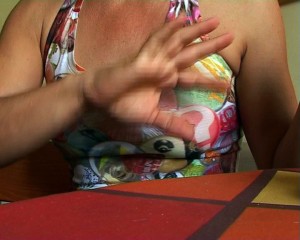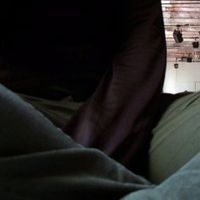The bridges to build in performing arts in Europe: utopia or reality?

These interviews classify working methodologies and define common grounds for programmers and artists. It’s part of a larger research, which will lead to a database of information about artists and programmers. The final aim of this research is to propose systems of dialogue between these two communities of professionals, in order to enable the arts market to escape from the neo-liberal rhythm of any other market, valorizing the real essence and the meaning of art, without forgetting the importance of reaching an audience.
Over the last year, I have been conducting a series of interviews with European creators and programmers. The people I interviewed have a very critical view of society but are also conscious that the arts market works according to neo-liberal rules. I wanted to understand how they work and if there is a common ground which would enable more positive relations between them and an audience.
How artists work
Artists are interested in communicating their own personal questions and concerns with an audience, involving them in an experiment. To get there, we can find two kinds of working methods: the intuitive and the systematic. Intuitive artists tend to flow within the creation process, while systematic ones know how they want to develop their work. Either way, time is an important issue for the creation process and many confess needing a première date to end the piece. However, this does not mean the end of the process. Many artists consider that the piece can still be developed after the première and continue to work on it.
Production rhythm defines creation time and this depends a lot on the budget. While research can take a long time as it can be done alone and without expectation of any payment, the rehearsal is done within a period of two or three months. This process can happen sequentially, be spaced out in time over a larger period, or happening in alternating phases. This is a reflection of the market. Nowadays, many artists create pieces at the same time they are touring other works.
Collaboration on a 50-50 basis has two different approaches. Some artists prefer to direct their work, while others really enjoy collaborating. Being considered harder to manage is also as a good exercise of negotiation and much richer than working alone . The most experienced creators tend to be more interested in developing their own ideas, while the younger generation is much more open to collaboration. In any case, many creators see their performers as collaborators – which makes this selection very important - and certain areas are put in the hands of other creators; for example, light design, the scenic space, and music design are seen as part of the creation which happens on a collaborative basis.
Opening the process to an audience is very common. Today, many creations are made in residency circuits and many of the host venues request artists to open their process to an audience. Most of them agree to that although they prefer to decide when this should happen. Most artists prefer to open the process to a specialised audience, usually a group of friends who comprehend the artist and the creation context. This tendency is an awareness of the audience. There are many artists who tend to think their pieces according to the audience they expect. Creators are much more focused on the way they should present their work, rather than reflecting more extensively on the reason why and what they are creating.
Different programming spaces
Most of the programmers interviewed developed programmes based on more risky languages , for both independent organisations formed by civil society and institutional organisations created by governments or private sponsors.
Independent spaces were created to support artists who do not have their own places at which to show their works. While institutional spaces develop their programmes according to a level of visibility which is more directed towards an audience. Both are interested in supporting artists but while independent spaces tend to be more aware of artists’ needs and more concerned with the creation process, institutions tend to focus on financial support and are more centred on the product.
Independent spaces depend a lot on subsidies or grants (more than from sponsorship), which can delay their final artistic programme, sometimes by up to three months. Institutions have to plan their budget in advance, which pushes them to close their programmes up to one to one-and-a-half years in advance. Some, however leave space for possible new creations, finalising the programme only six months before it begins.
Both spaces tend to use the same approaches in creating the programme. They go to see the artists perform, they speak with the artists and other programmers. The last resource is to use videos of performances and this is done only when there are no financial resources for travel, or in the initial selection or when they already know the artists.
Programmers understand the importance of their role as mediators between artists and audience. There is a context or an identity that needs to be built and recognised. In both cases, programmers choose their artists according to what is important for that context, rather than according to their personal tastes.
Perceptions and relations between artists and programmers
Commissions under certain themes are more frequently asked of younger generation artists. Most artists do not react negatively to commissions. These are seen as challenges and as opportunities to develop rich conversations with programmers. However, they have to have a meaning. If not, artists prefer to refuse them. Except when they really need the money.
Artists’ perceptions of programmers are connected to their previous experiences. Renowned and established artists tend to see them as colleagues, while the less visible ones have a very critical view. In any case, all artists think that programmers are responsible for facilitating the dialogue between them and the audience. They have to generate the correct context in which artworks are presented. Most artists emphasise the high level of responsibility programmers have. A programmer has to be someone who is always aware of what is happening, or should be happening, in arts and in society and they need to have a critical view about the world.
Relationships between artists and programmers are based, in a lot of cases, on similar views and discourses. For artists, the basis of a good relationship is honesty, mutual admiration and respect. But most of all, the ability to communicate allows for good relationships.
Programmer and artist have to develop a critical dialogue. This dialogue is much more present within independent organisations and is seen as very important: it allows for the creation of discourses towards building an audience. Some programmers have the opportunity to follow the creation process; they do it as producers or as observers. Above all, they respect the artistic work and do not like to impose themselves. They understand the power of their role and are afraid that can be badly misunderstood by artists. Some confess that they would like to have more time to be closer to the creative process, assuming the role of a dramaturgist, something that is pleasant for artists. Programmers from Northern Europe are much more used to interfering in the creative process. They are very conscious of their power and tend to see their critical perspective not as an ‘abuse of power’, but rather as the disposal of their knowledge of the market for the artist’s benefit.
On the other hand, artists do not feel capable of contributing actively to artistic programming, although they admit that they can give hints about other artists and on how to build up contexts. But this input can only exist when there is empathy with programmers. Most artists consider that this is the programmers’ work and not the artists’. Conversely, programmers tend to see well the possible input that artists can provide on their programmes.
Conclusion
We need to build a bridge between artists and programmers, to create a honest dialogue based on mutual respect. While artists are much more used to receiving critiques of their work, during the creative process or after the premiere of their work, there is not the same undertaking for the programmers’ artistic proposals. Although the world of arts is very frenetic, artists and programmers should establish time for dialogue as a priority in the development of both party’s artistic views.
Catarina Saraiva is a producer and programmer.
After 10 years at the direction of alkantara in Lisbon, in 2009 she moves to Madrid where she takes a master degree in “Performing Studies Practices and Visual Culture” at the University of Alcalá de Henares. In the frame of this master she initiates the laboratory and research project “Linha de Fuga”, a project which questions the relation between programmer and creator. This project ends with an artistic programme hosted in October by La Casa Encendida, in Madrid. Since September 2010 she’s part of the think tank and development group of El Ranchito, a research project promoted by Matadero Madrid. She collaborated as a dramaturgist in the piece “The Diary of Alice” by Joavien Ng and Paloma Calle. At the present moment she’s also developing a research project on the working methodologies of contemporary performing arts programmers and creators.






